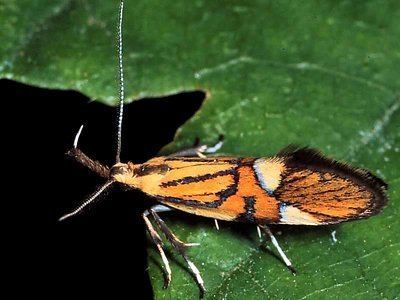Scientific name Gelechioidea | Subsection Tineina Rank Superfamily | |
 | ||
Lower classifications | ||
Gelechioidea (from the type genus Gelechia, "resting on the ground") is the superfamily of moths that contains the case-bearers, twirler moths, and relatives, also simply called curved-horn moths or gelechioid moths. It is a large and poorly understood '"micromoth" superfamily, constituting one of the basal lineages of the Ditrysia.
As of the 1990s, this superfamily was composed of about 1,425 genera and 16,250 species. It was estimated that only 25% of the species diversity of Gelechioidea had been described. If this estimate is accurate, Gelechioidea will be one of the largest superfamilies of Lepidoptera.
The name "curved-horn moths" refers to one of the few conspicuous features found in (almost) all Gelechioidea, and, at least in the more extreme developments, unique to them: the labial palps are well-developed (though not thickened), and form more or less gently curved protrusions whose end has a drawn-out, pointed tip. Their proboscis is generally well-developed, allowing for long-lived imagines (adults); the proximal part of the proboscis is scaly. Otherwise, the Gelechioidea vary extensively in habitus; most have small hindwings with long, hairy fringes, though these are not easily seen in the living animal as they are tucked under the forewings at rest. The body is usually quite compressed, either dorsoventrally or laterally.
Families
The phylogeny and classification of the Gelechioidea remains a subject of considerable dispute. For example, the Elachistidae were at one time used as a sort of "wastebin taxon" to unite as subfamilies a variety of plesiomorphic members of this superfamily, which do not actually seem to form a monophyletic group. Many of these have now been moved to the Oecophoridae, but others are almost certainly likely families in their own right, while additional ones may well be so.
Following molecular research, the Gelechioidea are provisionally divided into the following family-level taxa:
Plus two families of unclear placement:
Before this revision, the superfamily was divided into the following family-level taxa:
The genus Aeolanthes is sometimes placed in the Elachistidae, Lecithoceridae, or Oecophoridae as a monotypic subfamily (Aeolanthinae), but its actual relationships are not reliably determined yet.
